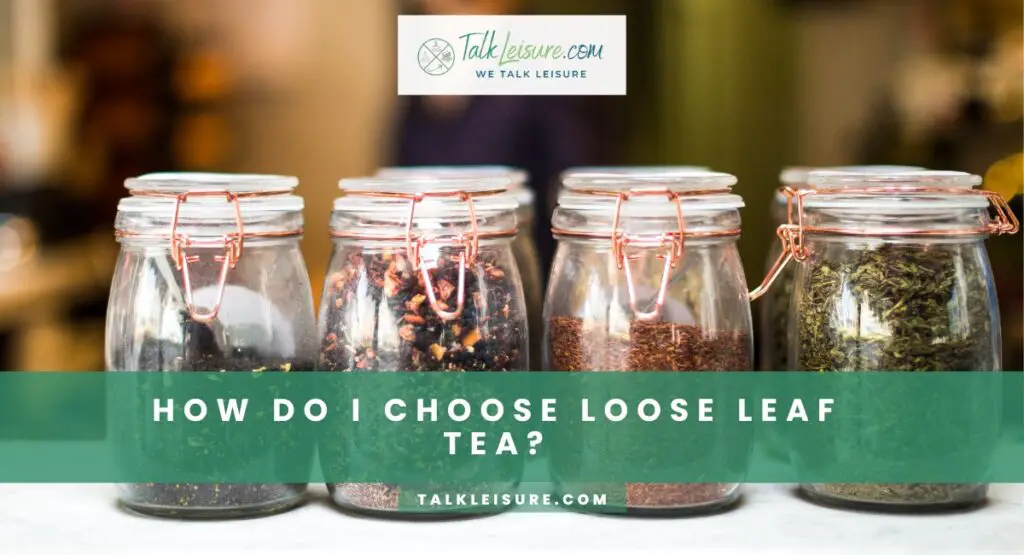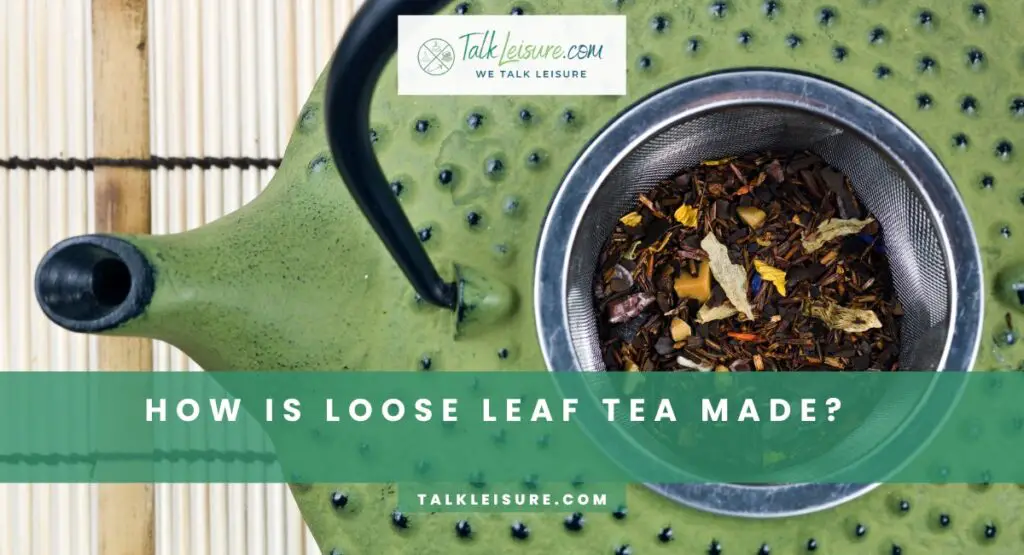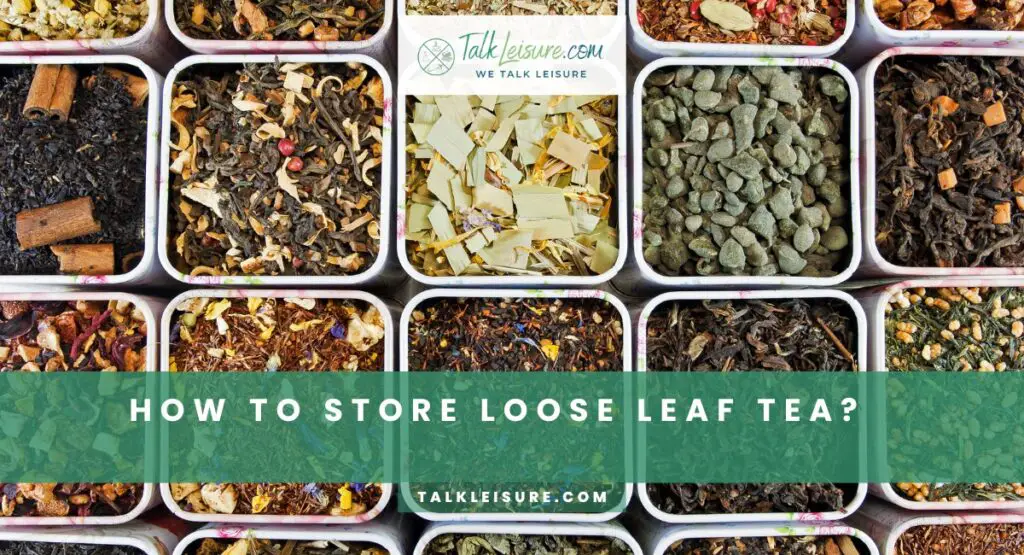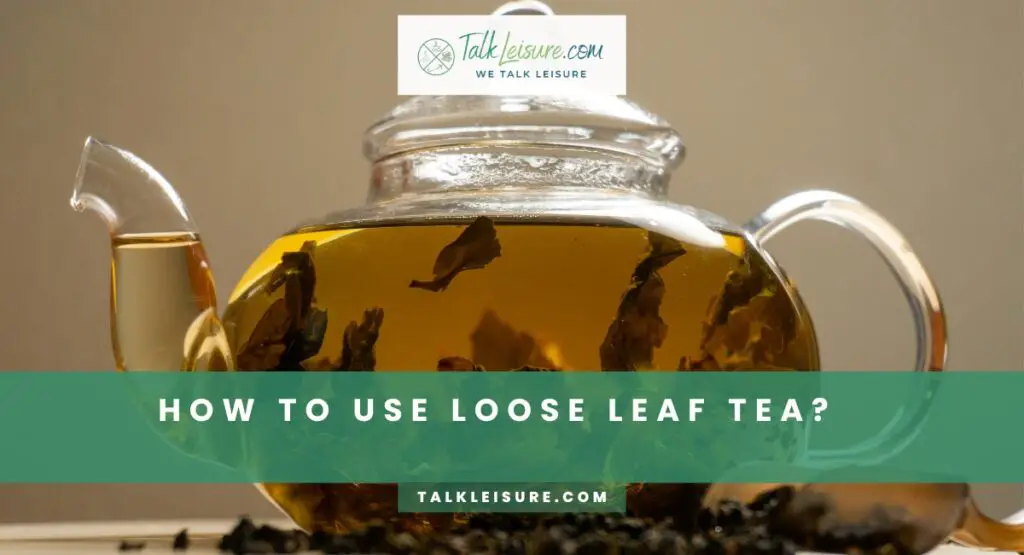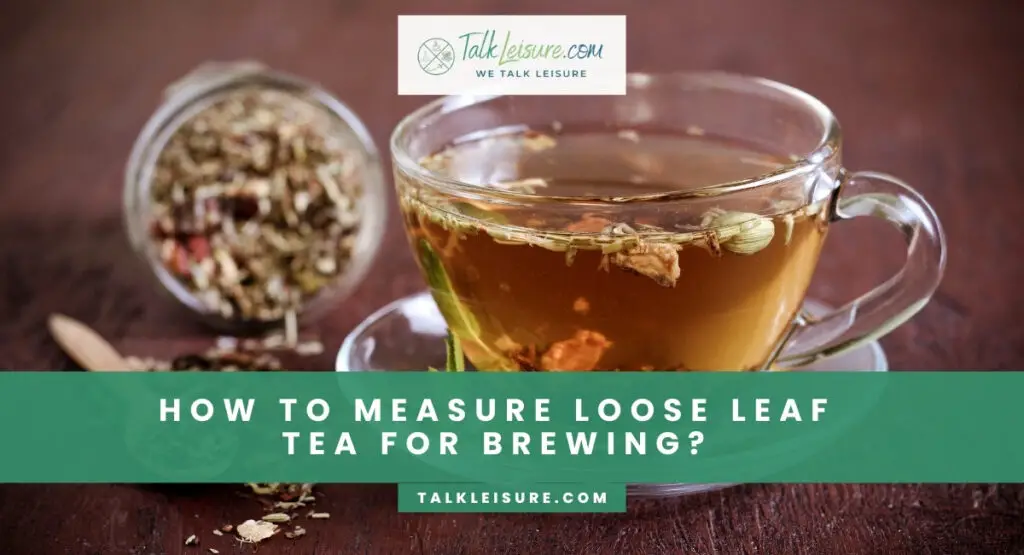Loose-leaf tea is a popular choice for enthusiasts seeking superior taste and aroma in a world filled with various tea options.
While bagged teas may be more convenient, loose-leaf tea offers a more authentic and customizable tea-drinking experience.
If you’re new to loose-leaf tea and unsure how to choose the best one, fear not!
To choose loose-leaf tea, consider type, quality, origin, flavor, grade, aroma, and packaging. Read descriptions, reviews, and ingredient lists. Experiment with samples to find the best match for your taste preferences.
Also, this article will guide you through selecting loose-leaf tea that suits your preferences and help you brew the perfect cup.
What Is Loose Leaf Tea?

Loose-leaf tea is a tea that comes in loose form instead of being packaged in tea bags.
The leaves are whole or broken, providing a more natural and authentic tea experience.
Loose-leaf tea refers to high-quality tea leaves not enclosed in traditional tea bags.
Instead, these tea leaves are sold in natural, whole-leaf form, offering a more flavorful and aromatic experience than pre-packaged tea bags.
Loose-leaf tea allows for greater expansion and unfurling during steeping, enabling the flavors and essential oils to infuse the water thoroughly.
It allows tea enthusiasts to explore various tea varieties, blends, and infusions while enjoying a fresher, more customizable tea-drinking experience.
What Are The Types Of Loose Leaf Tea?
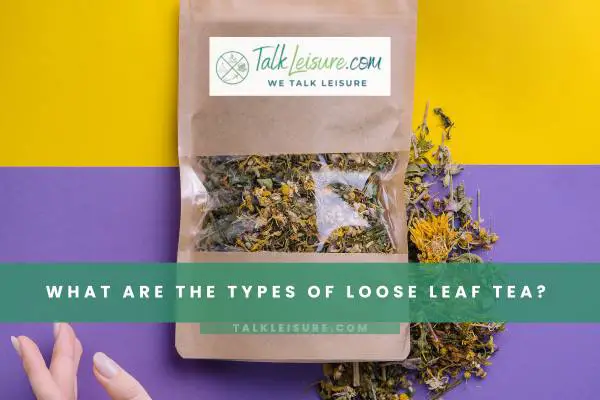
Loose-leaf tea comes in various types, offering distinct flavors and health benefits. Some of the common types include:
- Green Tea: Known for its delicate and grassy flavor, it is minimally processed and rich in antioxidants.
- Black Tea: Full-bodied and robust, black tea undergoes complete oxidation, resulting in a darker color and bold taste.
- White Tea: The least processed tea, white tea has a subtle, sweet flavor and is prized for its high antioxidant content.
- Oolong Tea: Partially oxidized, oolong tea falls between green and black tea, offering a diverse range of flavors, from floral to fruity.
- Herbal Tea: Not derived from the Camellia sinensis plant, herbal teas are made from various herbs, flowers, and fruits, offering various flavors and potential health benefits.
Here’s a comparison table outlining different types of loose-leaf teas based on various characteristics:
| Tea Type | Oxidation Level | Flavor Profile | Caffeine Content | Brewing Temperature | Brewing Time |
|---|---|---|---|---|---|
| Green Tea | Low | Fresh, grassy, vegetal | Low | 160-180°F (71-82°C) | 1-3 minutes |
| Black Tea | High | Bold, robust, malty | Moderate to High | 200-212°F (93-100°C) | 3-5 minutes |
| Oolong Tea | Medium | Floral, fruity, toasty | Moderate | 180-200°F (82-93°C) | 2-4 minutes |
| White Tea | Low | Delicate, subtle | Low to Moderate | 160-185°F (71-85°C) | 2-5 minutes |
| Herbal Tea | None | Various, based on herbs | Caffeine-free | 200-212°F (93-100°C) | 5-7 minutes |
| Rooibos Tea | None | Sweet, earthy, nutty | Caffeine-free | 200-212°F (93-100°C) | 5-7 minutes |
| Pu-erh Tea | Variable | Earthy, aged, complex | Moderate | 200-212°F (93-100°C) | 3-5 minutes |
How Do I Choose Loose Leaf Tea?
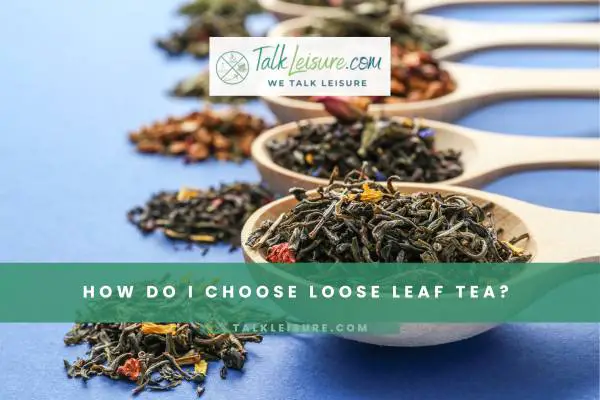
Selecting the right loose-leaf tea can seem overwhelming at first, but with a few key considerations, you’ll be sipping your favorite blend in no time:
Flavor Preference: Consider the type of flavor you enjoy. Do you prefer something light and floral like green or white tea, or do you crave a bold and robust flavor like black tea?
Caffeine Content: Take note of the caffeine content in your chosen tea. Green and white teas generally have less caffeine than black tea.
Origin: Some tea enthusiasts prefer teas from specific regions, as different areas produce unique flavor profiles.
Quality: Opt for high-quality loose-leaf tea to provide a more satisfying and flavorful experience.
Aroma: The aroma of the tea can greatly enhance your overall tea-drinking experience. Consider sniffing the tea before purchasing it to understand its aroma.
What Are The Best Loose Leaf Tea Brands In The Market?
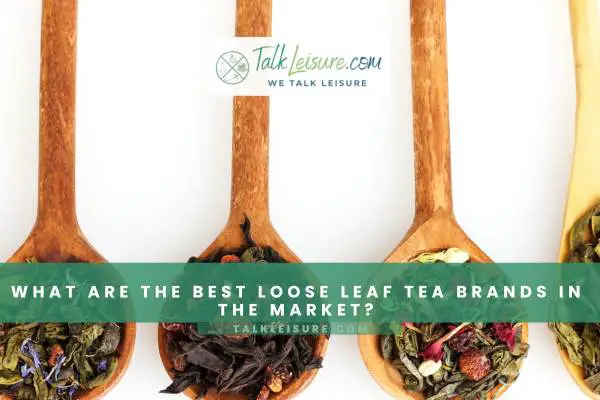
Numerous loose-leaf tea brands offer a wide range of flavors and qualities. Here are some of the best brands you can explore:
Harney & Sons: Known for its diverse selection and exceptional quality, Harney & Sons is a favorite among tea enthusiasts.
Twinings: With a history dating back to 1706, Twinings offers a vast selection of traditional and innovative tea blends.
Adagio Teas: A popular online retailer, Adagio Teas provides an extensive range of loose-leaf teas and tea accessories.
Teavana: Acquired by Starbucks, Teavana offers a variety of unique blends and single-origin teas.
David’s Tea: Known for its creative and flavorful blends, David’s Tea is a great option for those seeking adventurous tea experiences.
The Best Loose Leaf Tea Checklist
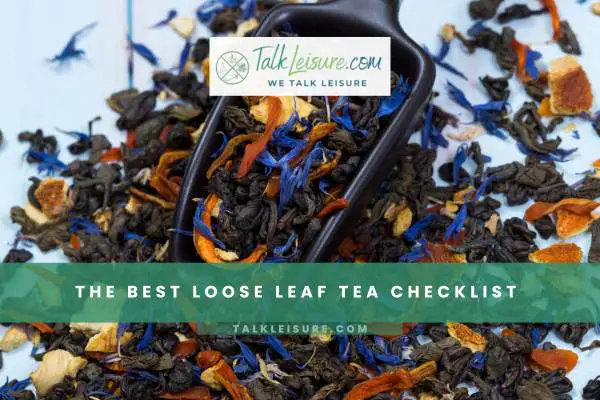
To help you navigate through the vast world of loose-leaf tea, here’s a checklist to keep in mind when selecting your perfect brew:
Flavor Preference: Identify the type of flavor you enjoy, whether light and floral or bold and robust.
Caffeine Content: Determine the amount of caffeine you prefer in your tea, as different types of tea contain varying levels.
Quality: Look for loose-leaf tea to ensure the best taste and aroma.
Aroma: Consider the aroma of the tea, as it can significantly impact your tea-drinking experience.
Origin: Some tea enthusiasts prefer teas from specific regions for their unique flavor profiles.
Health Benefits: Take note of the potential health benefits associated with your tea type.
Packaging: Ensure the tea is properly packaged to retain freshness and flavor.
Customer Reviews: Read customer reviews to gain insights into the tea’s flavor, aroma, and quality.
Experiment: Don’t be afraid to try different teas and explore new flavors to find your favorites.
Why Should You Drink Loose Leaf Tea?
Drinking loose-leaf tea offers numerous advantages over bagged tea:
Superior Quality: Loose-leaf tea generally consists of whole or large leaves, resulting in better flavor and aroma than tea bags.
Customization: With loose-leaf tea, you can adjust the amount of tea leaves and steeping time to suit your taste preferences.
Better Health Benefits: Loose-leaf tea retains more antioxidants and essential oils, making it healthier.
Environmental Benefits: Loose-leaf tea reduces the use of single-use tea bags, contributing to a more sustainable lifestyle.
Richer Flavor: The large surface area of loose leaves allows for better flavors and essential oils extraction, enhancing the overall taste.
What Are The Best Places To Drink Loose Leaf Tea?
Drinking loose-leaf tea can be a delightful experience, especially in the right setting. Some of the best places to savor loose-leaf tea include:
- Teahouses and Tea Rooms: Specialized teahouses and tea rooms often offer an extensive selection of loose-leaf teas prepared by experts.
- Japanese Tea Gardens: Immerse yourself in the serene atmosphere of a traditional Japanese tea garden while sipping on authentic Japanese teas.
- Botanical Gardens: Some gardens have tea pavilions or cafes where you can enjoy tea surrounded by nature’s beauty.
- Tea Tasting Events: Look for local tea-tasting events where you can sample various loose-leaf teas and learn more about their origins and flavors.
- Home: Brewing loose-leaf tea at home can be a cozy and enjoyable experience, allowing you to relax and savor your favorite blend.
Where To Buy Loose Leaf Tea?

Finding loose-leaf tea is easier than ever, thanks to the various options available:
Specialty Tea Shops: Visit local tea shops or specialty stores that offer a wide range of loose-leaf teas.
Online Retailers: Many online retailers provide a vast selection of loose-leaf teas, allowing you to explore and order from the comfort of your home.
Farmer’s Markets: Some farmers may have vendors selling freshly sourced loose-leaf teas.
Tea Gardens and Plantations: If you can, visit tea gardens and plantations directly to purchase authentic and fresh loose-leaf tea.
Tea Subscription Services: Consider subscribing to tea subscription services regularly delivering new and exciting loose-leaf teas to your doorstep.
How To Brew Loose Leaf Tea?
Brewing loose-leaf tea may seem intimidating, but it’s a straightforward process that can be mastered with a little practice. Here’s a step-by-step guide to brewing the perfect cup:
Measure the Tea: Use approximately one teaspoon of loose-leaf tea per 8 ounces of water.
Preheat the Teapot: Rinse it with hot water to warm it up and prevent heat loss during brewing.
Boil Water: Bring fresh, cold water to a boil. Different teas have varying optimal water temperatures, so refer to the specific tea brewing instructions.
Steeping Time: Pour the hot water over the tea leaves in the teapot and let it steep for the recommended time. Green teas usually require a shorter steeping time compared to black teas.
Strain the Tea: Using a tea strainer or infuser to strain the tea leaves from the liquid after steeping.
Enjoy: Pour the freshly brewed tea into your cup and savor the delightful flavors and aromas.
How To Drink Loose Leaf Tea?

To enjoy loose-leaf tea, follow these steps:
Boil water and let it cool slightly. Add tea leaves to an infuser or teapot (1 tsp per cup). Pour water over leaves and steep for the recommended time (varies by type). Strain and savor the rich flavor of loose-leaf tea.
Drinking loose-leaf tea is an enjoyable experience that can be enhanced with a few simple tips:
- Sip Slowly: Take small sips to savor the intricate flavors of the tea.
- Appreciate the Aroma: Before taking a sip, inhale the aroma of the tea to enhance the overall experience.
- Avoid Adding Milk: Unlike some black teas, loose-leaf teas are best enjoyed without milk, as it may overpower the delicate flavors.
- Experiment with Sweeteners: If desired, experiment with natural sweeteners like honey or agave to find your preferred level of sweetness.
- Pair with Snacks: Pair your loose-leaf tea with light snacks or biscuits to complement the flavors.
What Is The Best Loose Leaf Tea Ratio?
The ideal tea-to-water ratio for loose-leaf tea depends on personal preference and the type of tea.
As a general guideline, use one teaspoon of tea leaves for every 8 ounces of water.
However, you can adjust the amount of tea leaves to make your tea stronger or weaker according to your taste.
Here’s a general guideline for some common types of loose leaf tea:
| Type of Tea | Tea Amount | Water Amount | Temperature | Steeping Time |
|---|---|---|---|---|
| Green Tea | 1 tsp per 8 oz | 8 oz (1 cup) | 160-175°F | 1-3 minutes |
| Black Tea | 1 tsp per 8 oz | 8 oz (1 cup) | 200-212°F | 3-5 minutes |
| Oolong Tea | 1 tsp per 8 oz | 8 oz (1 cup) | 185-205°F | 3-5 minutes |
| White Tea | 1.5 tsp per 8 oz | 8 oz (1 cup) | 160-185°F | 2-5 minutes |
| Herbal Tea | 1-2 tsp per 8 oz | 8 oz (1 cup) | 200°F | 5-7 minutes |
| Rooibos Tea | 1-2 tsp per 8 oz | 8 oz (1 cup) | 200°F | 5-7 minutes |
Is Loose Leaf Tea Better Quality?
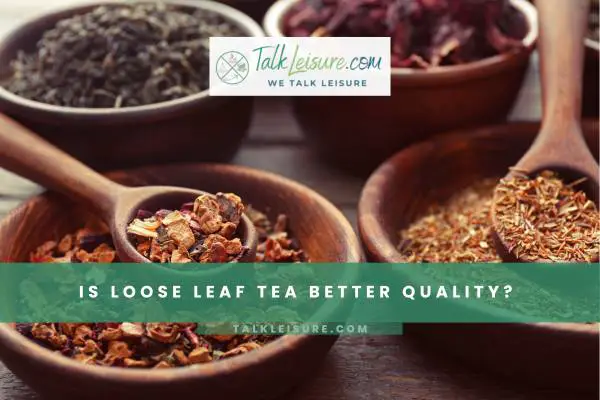
Yes, loose-leaf tea is generally considered better quality than tea bags.
Loose-leaf tea consists of whole or large leaves, which retain more flavor and aroma than the fragmented leaves in tea bags. This results in a more satisfying and authentic tea-drinking experience.
How To Check The Loose Leaf Tea Quality?
When assessing the quality of loose-leaf tea, consider the following factors:
Appearance: High-quality tea leaves should be whole or in large pieces, indicating minimal processing.
Aroma: Fresh and high-quality loose-leaf tea will have a pleasing and distinct aroma.
Color: Check the color of the tea leaves; vibrant and lively colors often indicate good quality.
Origin: Some tea regions are renowned for producing premium teas, so knowing the origin can give you an idea of the quality.
Vendor Reputation: Buy from reputable tea sellers or brands known for their commitment to quality.
Best Loose Leaf Tea Reviews
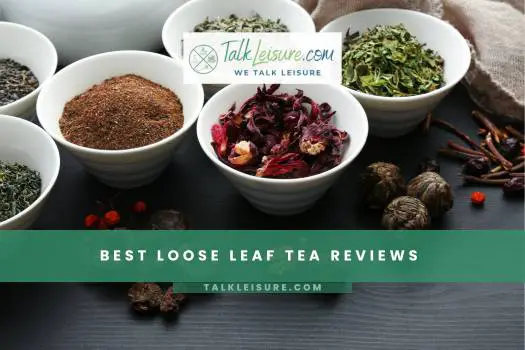
Here are reviews of some popular loose-leaf teas:
Harney & Sons Dragon Pearl Jasmine: A delightful green tea scented with jasmine flowers, providing a fragrant and smooth flavor.
Twinings Earl Grey: A classic black tea infused with bergamot, offering a well-balanced and aromatic cup.
Adagio Teas White Symphony: A delicate white tea blend with hints of apricot and peach, providing a light and refreshing taste.
Teavana Maharaja Chai Oolong: An enticing oolong chai blend with a harmonious balance of spices and tea leaves.
David’s Tea Forever Nuts: A flavorful herbal tea with a mix of almonds, apples, and cinnamon, creating a nutty and sweet taste.
Final Thoughts
Choosing loose-leaf tea opens up a world of flavors and possibilities for enthusiasts.
With a wide range of types and brands available, there is a perfect loose-leaf tea for everyone.
Whether you prefer the delicate flavors of green tea or the robustness of black tea, exploring the world of loose-leaf tea is a rewarding journey.
You can select a loose-leaf tea that perfectly suits your taste buds by considering flavor preference, caffeine content, and quality.
Brewing and enjoying loose-leaf tea is a delightful experience that allows you to savor the authentic taste of tea leaves while reaping the health benefits.
FAQ
Is Loose Leaf Tea Better Quality?
Yes, loose-leaf tea is generally considered better quality than tea bags. Loose-leaf tea consists of whole or large leaves, which retain more flavor and aroma than the fragmented leaves in tea bags. This results in a more satisfying and authentic tea-drinking experience.
Which Type Of Tea Is The Healthiest?
All types of tea offer health benefits, but some varieties may have specific advantages. Green tea, for example, is renowned for its high antioxidant content and potential health benefits related to heart health and metabolism. However, your healthiest tea depends on your health goals and preferences.
Why Does My Loose Leaf Tea Taste Weak?
There are several reasons why your loose-leaf tea may taste weak:
- Insufficient Tea Leaves: Using too few tea leaves can result in a weak brew. Increase the amount of tea leaves to achieve a stronger flavor.
- Short Steeping Time: If you don’t steep the tea long enough, it may not have enough time to release its full flavor. Follow the recommended steeping time for the specific tea.
- Low Water Temperature: Using water that is not hot enough may not fully extract the flavors from the tea leaves. Ensure your water temperature is appropriate for the tea you’re brewing.
- Old Tea Leaves: If your loose-leaf tea is past its prime, it may have lost some flavor and potency. Use fresh tea leaves for the best taste.
Best Wishes!

